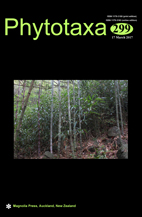Abstract
The genus Linum consists of 15 species in Iran. A new species as well as a new record from Iran is described and illustrated here as L. khorassanicum and L. turcomanicum, respectively. The original description of the latter species is incomplete and ambiguous, probably due to incomplete taxon sampling. In this work, after a comprehensive taxon sampling from the entire distribution range of the species in northeast of Iran, the taxonomic description of L. turcomanicum is completed. The present study considers morphological and molecular (the nrITS region) analyses of the both species. In phylogenetic analysis based on the molecular data, we included these species and some related Linum species to examine the phylogenetic relationship of the new species and L. turcomanicum with other members of the genus. Linum turcomanicum is morphologically almost similar to L. austriacum and L. perenne, but it can be distinguished from them on the basis of several traits such as fruiting-pedicel form and length of petal. Likewise, results obtained from the molecular phylogenetic tree are consistent with those obtained from the morphological data. Linum khorassanicum is well characterized morphologically by having erect fruiting pedicels and inflorescence with few flowers. Our results suggest that the morphological data are in agreement with the molecular phylogenetic tree in which the taxonomic status of L. khorassanicum is confirmed as a new species. Based on IUCN Red List categories and criteria, L. khorassanicum and L. turcomanicum are evaluated as Endangered and Near Threatened species, respectively.

